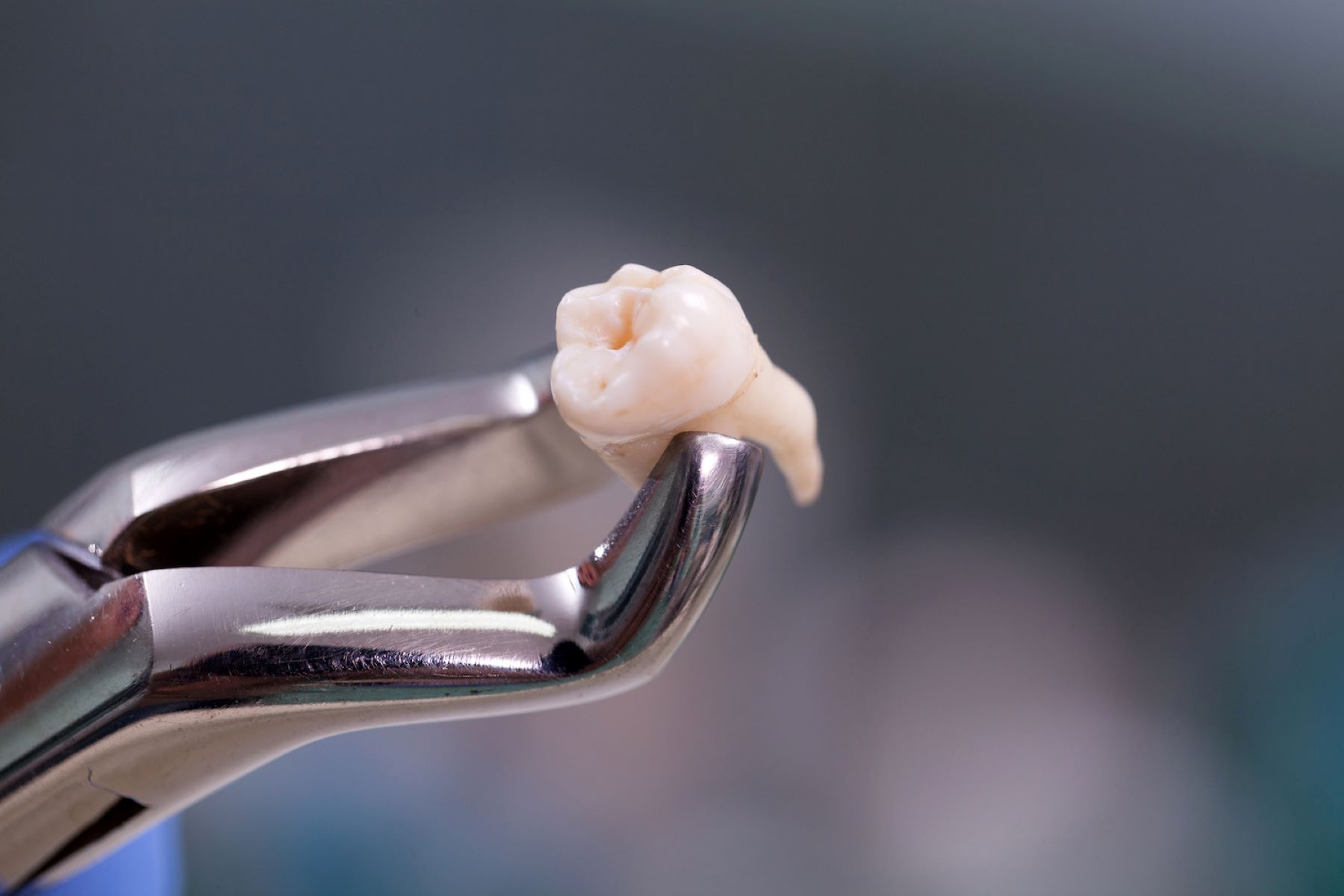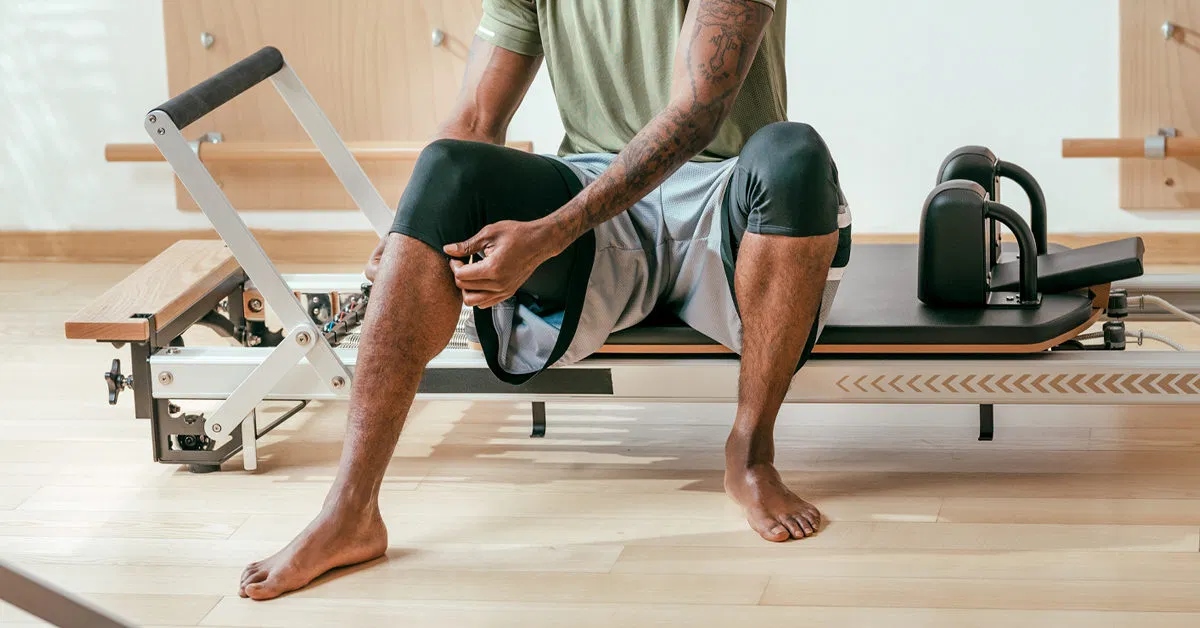Home>Misc>Featured>How Long After Abdominal Surgery Can You Exercise


Featured
How Long After Abdominal Surgery Can You Exercise
Published: September 26, 2023
Discover the recommended timeline for exercise after abdominal surgery. Stay informed with featured guidance on how long to wait before resuming your fitness routine.
Introduction
Abdominal surgery can be a major procedure that requires careful post-operative care and recovery. After undergoing abdominal surgery, it is important to give your body ample time to heal before engaging in any strenuous activities, including exercise. However, many individuals are eager to resume their exercise routines as soon as possible, as physical activity offers numerous benefits for overall health and well-being.
In this article, we will explore the factors to consider before exercising after abdominal surgery, the healing process, the recommended timeline for resuming exercise, and the types of exercises to start with. Additionally, we will discuss the precautions and warning signs to be mindful of during the recovery period.
It is worth noting that every individual”s recovery timeline may vary based on factors such as the type of abdominal surgery and the individual”s overall health. Therefore, it is crucial to consult with your healthcare provider before embarking on any exercise program following abdominal surgery.
Now, let us delve into the important considerations and guidelines for safely resuming exercise after abdominal surgery.
Factors to Consider Before Exercising After Abdominal Surgery
Before you start exercising after abdominal surgery, there are several key factors that you need to take into consideration. These factors will influence the timing and intensity of your exercise routine, ensuring a safe and successful recovery.
1. Type of Surgery: The type of abdominal surgery you underwent plays a significant role in determining how soon you can start exercising. Depending on the procedure, such as a hernia repair or a C-section, your healthcare provider will provide specific guidelines and restrictions. It is important to follow these guidelines to avoid any complications or setbacks during your recovery.
2. Healing Progress: Assess your healing progress to determine if you are ready to begin exercising. Your incisions should be fully healed, without any signs of infection or complications. Consult with your doctor to evaluate your healing progress and get clearance before starting any exercise regimen.
3. Pain and Discomfort: Pay attention to any residual pain or discomfort in the abdominal area. It is normal to experience some level of discomfort after surgery, but it should gradually subside. If you are still experiencing significant pain or discomfort, it may indicate that your body is not ready for exercise. Allow yourself more time to heal and consult with your doctor if the pain persists.
4. Fitness Level Prior to Surgery: Your fitness level prior to surgery may influence how quickly you can resume exercise. If you were already physically active and in good shape, your body may recover faster and adapt to exercise more easily. On the other hand, if you were not very active before surgery, you may need to start with gentle exercises and gradually increase intensity.
5. Overall Health: Consider your overall health and any pre-existing conditions that may impact your ability to exercise. Chronic conditions, such as diabetes or heart disease, may require additional caution and modifications to your exercise routine. Talk to your healthcare provider about any specific considerations or recommendations based on your health history.
By taking these factors into account, you can make an informed decision about when to start exercising after abdominal surgery and what precautions to follow. Remember, it is crucial to consult with your healthcare provider before beginning any exercise regimen to ensure the safety and effectiveness of your recovery process.
Healing Process after Abdominal Surgery
The healing process after abdominal surgery is a crucial phase that requires time, patience, and proper care. Understanding the stages of healing can help you better navigate the recovery period and determine when it is appropriate to start exercising again.
1. Initial Recovery Phase: Immediately after surgery, your body goes into the initial recovery phase. During this time, your incisions begin to heal, and the surrounding tissues start to repair themselves. It is essential to follow your healthcare provider’s instructions regarding wound care, medications, and lifestyle modifications to promote healing and prevent complications.
2. Inflammation and Scar Healing: In the following weeks, your body enters the inflammation phase, where the healing process is accompanied by swelling, redness, and tenderness around the surgical area. This inflammation is a natural response and a crucial part of the healing process. As the inflammation subsides, your body starts forming scar tissue to repair and strengthen the surgical site.
3. Tissue Regeneration: Over time, the scar tissue remodels and strengthens, and the surrounding tissues regain their elasticity and strength. This phase of tissue regeneration typically takes several months, but the exact timeline depends on various factors, such as the individual’s age, overall health, and the extent of the surgery.
4. Full Recovery: Achieving full recovery after abdominal surgery is a gradual process that varies from person to person. It is important to listen to your body and give it the time it needs to heal completely. Your healthcare provider will monitor your progress and guide you on when it is safe to resume normal activities, including exercise.
It is crucial to note that engaging in physical activity too soon after surgery can disrupt the healing process, cause complications, and delay your recovery. It is recommended to wait until you have completed the initial healing phase, the inflammation has subsided, and you have received clearance from your healthcare provider before resuming exercise.
Next, we will discuss the recommended timeline for resuming exercise after abdominal surgery, taking into account the healing process and individual factors.
Recommended Timeline for Resuming Exercise after Abdominal Surgery
When it comes to resuming exercise after abdominal surgery, it is crucial to follow a recommended timeline to ensure a safe and effective recovery. While individual healing times may vary, the following guidelines provide a general framework for gradually reintroducing physical activity post-surgery:
1. Week 1: Rest and Recovery
During the first week after abdominal surgery, your body needs ample rest and time to heal. This means avoiding any strenuous exercise or activities that may put stress on your abdominal muscles. Focus on gentle movements, such as short walks or stretching exercises recommended by your healthcare provider.
2. Weeks 2-6: Light Cardiorespiratory Exercise
At around two weeks post-surgery, with your doctor’s approval, you can start incorporating light cardio exercises into your routine. This may include activities such as brisk walking, stationary cycling, or swimming. Start with short durations and low intensity, gradually increasing as tolerated and guided by your healthcare provider.
3. Weeks 6-8: Strength and Core Exercises
After six to eight weeks, you can begin incorporating strength and core exercises to rebuild muscle strength and stability. Utilize resistance bands, bodyweight exercises, or light weights to target different muscle groups. It is important to start with low resistance and focus on proper form to avoid strain on the surgical area.
4. Months 3-6: Gradual Increase in Intensity
Between three to six months post-surgery, you can gradually increase the intensity of your workouts. This includes increasing resistance, duration, or frequency of your exercises. However, always listen to your body and be mindful of any discomfort or pain. If you experience any unusual symptoms, consult with your healthcare provider.
Remember, every individual’s recovery is unique, and it is essential to consult with your healthcare provider before starting any exercise program. They can assess your specific case and provide personalized recommendations based on your surgical procedure, healing progress, and overall health.
By following a recommended timeline and gradually increasing your activity level, you can help promote proper healing, regain strength, and minimize the risk of complications. Patience and consistency are key during this recovery process.
Next, we will discuss the types of exercises to start with after abdominal surgery, focusing on those that are safe and beneficial for your recovery.
Types of Exercises to Start with after Abdominal Surgery
After abdominal surgery, it is important to start with gentle exercises that promote healing, improve flexibility, and gradually rebuild strength. Here are some types of exercises recommended for the initial stages of recovery:
1. Walking: Walking is an excellent low-impact exercise that can be started soon after surgery. Begin with short walks around your home or neighborhood and gradually increase the duration and intensity. Walking helps improve cardiovascular fitness, promotes circulation, and aids in the healing process.
2. Deep Breathing and Gentle Stretching: Deep breathing exercises can help maintain lung function and prevent complications. Combine deep breathing with gentle stretching exercises to improve flexibility and reduce stiffness. Focus on stretching your upper body, gently moving your arms, neck, and shoulders.
3. Pelvic Floor Exercises: Strengthening the pelvic floor muscles is crucial after abdominal surgery, particularly for women who have undergone procedures such as a C-section. Performing pelvic floor exercises, also known as Kegels, can help improve bladder control and promote healing in the pelvic area. Consult with a pelvic floor physical therapist for proper technique and guidance.
4. Core Stabilization Exercises: As your healing progresses, you can begin incorporating gentle core exercises to rebuild strength and stability. Focus on exercises that engage the deep core muscles, such as gentle abdominal contractions and pelvic tilts. As your strength improves, you can gradually add more challenging exercises, such as planks or modified crunches, under the guidance of a healthcare professional.
5. Low-Impact Aerobic Exercises: Low-impact aerobic exercises, such as stationary cycling, swimming, or using an elliptical machine, can be introduced once you are cleared by your healthcare provider. These exercises are gentle on the joints and can help improve cardiovascular fitness without putting excessive stress on the abdominal muscles. Start with shorter durations and gradually increase as tolerated.
Always remember to listen to your body and pay attention to any discomfort or pain during exercise. If you experience any unusual symptoms, such as bleeding, excessive swelling, or severe pain, stop exercising and consult with your healthcare provider immediately.
It is essential to progress gradually and not push yourself too hard or too soon. Your body needs time to heal and regain strength after abdominal surgery. Seeking guidance from a healthcare professional, such as a physical therapist or personal trainer with experience in post-surgical recovery, can also be beneficial in designing a safe and effective exercise program tailored to your specific needs.
In the next section, we will discuss the precautions and warning signs to be mindful of during exercise after abdominal surgery.
Precautions and Warning Signs during Exercise after Abdominal Surgery
While exercise is beneficial for recovery after abdominal surgery, it is crucial to approach it with caution and be aware of certain precautions and warning signs. Keeping these in mind will help ensure a safe and successful recovery process:
1. Listen to Your Body: Pay close attention to how your body feels during exercise. If you experience any sharp or intense pain, dizziness, shortness of breath, or excessive fatigue, stop exercising immediately. These can be signs that you are pushing yourself too hard or that your body is not yet ready for that level of activity.
2. Avoid Heavy Lifting and Straining: To protect your abdominal muscles and incisions, avoid heavy lifting, strenuous exercises that put excessive strain on the surgical area, or any activities that cause pain or discomfort. Gradually increase the intensity and weight as advised by your healthcare provider.
3. Protect Incision Sites: If you have visible incisions, ensure that they are properly covered and protected during exercise. Use clean bandages or specialized post-surgical garments recommended by your healthcare provider to provide support and minimize friction or irritation to the incision area.
4. Stay Hydrated: Hydration is essential for overall health and aids in the recovery process. Drink plenty of water before, during, and after your exercise sessions to maintain proper hydration levels. Dehydration can lead to fatigue, dizziness, and hinder the healing process.
5. Gradually Increase Intensity and Duration: Start with low-intensity exercises and gradually increase the intensity, duration, or frequency of your workouts as your body adapts and strengthens. Pushing yourself too hard or progressing too quickly can lead to injury and setbacks in your recovery.
6. Seek Professional Guidance: Consulting with a healthcare professional, such as a physical therapist or personal trainer experienced in post-surgical recovery, can provide invaluable guidance. They can help design an exercise program tailored to your specific needs and ensure that you are performing exercises correctly and safely.
Remember, every person’s recovery is unique, and it is essential to follow the advice and instructions given by your healthcare provider. If you have any concerns or questions about exercising after abdominal surgery, do not hesitate to reach out to your healthcare team for guidance and support.
By taking these precautions and being mindful of warning signs, you can integrate exercise into your recovery process safely and effectively. Regular exercise, when done correctly, can aid in healing, improve strength and flexibility, and enhance overall well-being.
Now, let us summarize the key points discussed in this article.
Conclusion
Returning to exercise after abdominal surgery requires careful consideration, patience, and a gradual approach. Taking into account factors such as the type of surgery, healing progress, pain levels, fitness level prior to surgery, and overall health is crucial in determining the appropriate timeline for resuming exercise.
It is important to follow the recommended timeline, starting with gentle exercises like walking, deep breathing, and pelvic floor exercises. As your healing progresses, gradually introduce more challenging activities like core stabilization exercises and low-impact aerobic exercises.
During exercise, it is essential to listen to your body, avoid heavy lifting and straining, protect incision sites, stay hydrated, and gradually increase intensity and duration. If you experience any pain, discomfort, dizziness, or excessive fatigue, it is crucial to stop exercising and seek guidance from your healthcare provider.
By taking proper precautions, being mindful of warning signs, and seeking professional guidance when needed, you can safely and effectively integrate exercise into your recovery process after abdominal surgery.
Remember that every person’s recovery journey is unique, and it is important to consult with your healthcare provider for personalized advice and recommendations. They can provide guidance specific to your procedure, healing progress, and overall health.
Exercise after abdominal surgery not only aids in physical recovery but also promotes overall well-being. It can improve cardiovascular fitness, strength, flexibility, and mental well-being. However, it is crucial to prioritize proper healing and listen to your body every step of the way.
So, when you are ready and have received clearance from your healthcare provider, take it slow, be patient, and enjoy the benefits that exercise can bring to your recovery after abdominal surgery.









